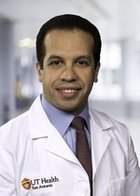|
Avoid bone fractures from osteoporosis (thin bones)
You can help prevent osteoporosis-related fractures. As the most common bone disease, osteoporosis is a growing problem in our aging population. It is sometimes confused with osteoarthritis, which is the wearing out of cartilage.
Osteoporosis is when the bones become porous or thin, caused by a lack of calcium structure in the bone. Aging leads to calcium loss, which causes a decrease in bone density. This is much more of a problem for women. As women go through menopause, their bones can lose as much as 3% of their calcium per year.
You can help prevent osteoporosis-related fractures. As the most common bone disease, osteoporosis is a growing problem in our aging population. It is sometimes confused with osteoarthritis, which is the wearing out of cartilage. Osteoporosis is when the bones become porous or thin, caused by a lack of calcium structure in the bone.
Aging leads to calcium loss, which causes a decrease in bone density. This is much more of a problem for women. As women go through menopause, their bones can lose as much as 3percent of their calcium per year.
Patients with osteoporosis are literally “one trip away from a fracture”. One in three women over age 50 will experience osteoporotic fractures, as will one in five men over 50.
What starts as a “silent disease” can lead to major life-altering fractures of the hip, spine and wrist. A simple, painless test can measure the amount of calcium in your bone. A bone density scan (or DEXA scan) can diagnosis osteoporosis. Bone density predicts fracture risk just like blood pressure predicts the risk of stroke or heart trouble.
The National Osteoporosis Foundation recommends bone density testing should be performed on all women age 65 and older, or for younger postmenopausal women with one or more risk factors such as poor vision, recent falls, low physical activity or low calcium.
Start preventing fractures with the following tips
Steps that nearly all patients can take to prevent fractures include adequate daily calcium and vitamin D in your diet, and regular weight bearing exercise.
The most important step in prevention is regular weight-bearing exercise. The stress of the body’s weight against gravity stimulates the bone to become stronger. Walking, jogging, stair climbing, dancing, and tennis are all good forms of exercise. Besides building stronger bones, strengthening muscles can also help prevent falls.
Before beginning a vigorous exercise program, visit your family practice or internal medicine physician for their guidance.
The recommended dietary allowance for calcium for patients over age 50 is at least 1200 mg per day of elemental calcium. The safe upper limit for total calcium intake has been set at 2500 mg per day. Learn more about the calcium you need at our website.
Taking calcium supplements isn’t enough, though. Equally important is getting enough vitamin D in your diet. Vitamin D helps your gut absorb the calcium and gets the calcium into you blood where it can be used. For patients at high risk for osteoporosis, 400 – 800 IU (international units) of Vitamin D is usually enough. Spending time outside in the sunshine also helps your body make its own vitamin D.
If you have a low score on your bone density scan, you should make an appointment with a primary care physician who cares for patients with osteoporosis, or you may need an endocrinologist for the selection of one of the newer drugs that can increase your bone mass.
Make an appointment with UT Health Orthopaedics by calling 210-450-9300.
 |
|
 |  |
|
Focus on women's health
May is Women's Health Month and a great time to think about yearly exams. Our Women's Comprehensive Health Institute offers a full range of women's services in one day, in one convenient location.
Ready to quit smoking?
We offer free, monthly group classes as well as individualized treatment to help you give up any kind of tobacco habit.
It would be hard to believe there is anybody out there who still thinks smoking or any type of tobacco use is a healthy habit. Within the last five years, the U.S. government has spent about $1 billion on mass media campaigns aimed at driving down the number of American smokers.
Smoking isn’t only a problem in the United States. China, Eastern Europe and Southern Europe have the highest tobacco use rates, worldwide. That is why in 1988, the World Health Organization designated May 31 as World No Tobacco Day. It is an annual campaign marked by health professionals around the world uniting in the effort to inform the public about the devastating risks of tobacco, about the tactics tobacco companies use to addict smokers and to promote what people can do to “claim their right to health and healthy living”.
Not only is smoking detrimental to a person’s overall health, it can also exacerbate the symptoms of other illnesses, such as asthma, heart disease and diabetes. And, it doesn’t just harm the smoker. The U.S. Department of Health and Human Services reports that every year, 3,000 nonsmokers will die of lung cancer caused by the hundreds of toxic chemicals released through second-hand smoke. That’s why tobacco prices will continue to rise and more places will implement bans on smoking and the use of tobacco products.
To learn more, or if you are ready to quit, UT Health can help through our Tobacco Cessation Program. Click here for details.
 |  |
Meet our new providers
Meet the latest members of the UT Health team, from a wide array of specialties and services, all here to serve you.

Ahmed Mansour Elkenany, M.D.
Urology, Robert B. Green Campus

Deborah Mueller, M.D.
Surgical Oncology, UT Health Cancer Center

Anila Mustafa, M.D.
Endocrinology, Medical Arts & Research Center

Brian Planchar, M.D.
Ophthalmology, Texas Diabetes Institute

Raquel Reid, M.D.
Psychiatry, UT Health Main Campus

Allyson Womack, Au.D.
Audiology, Medical Arts & Research Center
|
 |  |
|
Blood pressure and you
High blood pressure is very common but can't be seen or felt. Many people with high blood pressure don't know they have it. Check out a new section on our website that explains what blood pressure is and how it affects health.
It's Stroke Awareness Month
Learn how to spot the signs and risk factors for stroke. It could save your life or the life of a loved one.
The term stroke is used to describe damage to brain tissue that occurs when the brain’s blood supply is depleted. UT Health’s team of expert Neurosurgeons and Neurologists who lead San Antonio’s Comprehensive Stroke Center urge you to learn the F.A.S.T. acronym that is used to describe the most common symptoms associated with a stroke. F- Drooping on one side of the FACE A - When raising both ARMS, one arm drifts downward S – Slurred or confused SPEECH T – TIME is the most important factor in successfully treating stroke. Call 9-1-1 if you or someone else exhibits any of these signs. Also, make note of the time that symptoms began, and relay that time to emergency responders. Throughout the month of May, UT Health Vascular Surgery is offering complementary carotid vascular screenings for individuals who are at risk. Call 210-450-9888 to complete a telephone questionnaire and determine if you are a candidate for a free carotid screening. Learn more about stroke at the UT Health website.
|
 |  |
|
UT Health Hill Country Primary Care
Our newest location, off I-10 at the Ralph Fair Road exit, offers primary care services for the entire family.
The location also features a comprehensive range of services, a state-of-the-art imaging center and specialists in orthopaedics, sports medicine, behavioral health, physical therapy and urology. Call 210-450-6800 for an appointment or visit us online.
UT Health research update: Parkinson's disease
Each month we feature an update from the researchers at UT Health, who are working behind the scenes to find cures and treatments for many conditions and diseases.
|
|
|